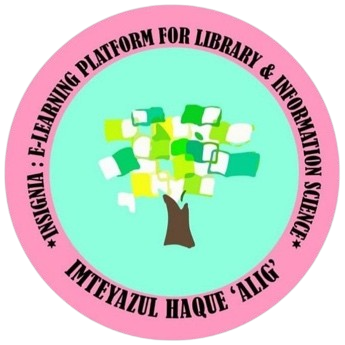Prepare by asking yourself many questions as possible, like “What is a library, its functions, the role of a library etc.” This will help clarify your concepts.
Matlab: sabse pehle aap khud se sawal kare basics se bilkul jaise library kya hai eske features, functions, etc. jaise jaise sawal ye sab ayega apke mind me waise aur v sawal ayenge ye bhi ek tarika hai tyaari karne ka aur sabko ek diary me likhiye
Secondly, review your BLIS and MLIS syllabus, identify any unclear topics, and focus on mastering them. For example, if management is a topic, narrow it down to its specific sub-topic e.g., Library Management Functions, HRM, Budgeting etc. Similarly, for IT, break it down into sub-topics like hardware (e.g., servers, computers, networking equipment) and software (e.g., library management systems, digital resource tools). By this way, you’ll be better equipped to grasp key concepts.
Matlab: Dusra, Aap blib and mlib ke syllabus ko ache se padhiye, Blib ke syllabus dekhiye aur usme ek ek subject ko ache se padhiye aur notes banaiye phir mlib ko bhi aise kijiye. Aise bhi aap tyari kar sakte hai interview ki aur aise apko knowledge bhi bahut hoga. Jaise: Management hai toh esme apko Management kya hota eske principles, phir HRM, phir budgeting phir reporting etc. aise hi aap IT le lijiye esme v apko Hardware, softwares, open source, types of software, library softwares etc. aur notes zrur banaye
Lastly, research the institution you’re interviewing with. If it’s a technical institute like IIT, be familiar with their software, databases, and indexing services etc. Tailor your preparation to the specific institution to make a strong impression.
Matlab: Aap kahi bhi jaye toh uske institute ke baare me padhe zrur. Jaise IITs me ja rahe toh uske websites ko dekhe unke databases, software konsa wo use karte aur services kya kya hai etc.
NOTE: Interviews are never pre-planned, and you won’t know all the questions in advance. What matters most is how you answer, your communication, and body language, Please note that the questions provided here are intended solely to give you a general idea and help you prepare for the interview.
Matlab: Hamesha yaad rakhiye, Interview kabhi bhi pehle se decide nhi hota ki ye sawal puchna hai ya hona hai aap kya bolte hai kaise bolte hai ye matter karta hai, aap sabkuch padh ke jaiye kuch bhi sawal ho sakta hai. Baqi maine apko ek idea diya hai aise tyaari kare Interview ki Umeed hai acha hoga sabhi ka aur aapko mehnat karni hogi interview ke liye bhi or knowledge ke liye bhi.
(IITs, NITs, IISERs, Central Universities, Research Institutions)
Step 1: Understand the Role of a Library Trainee
A Library Trainee is expected to assist in managing library resources, support research, and develop digital library services. This role acts as a foundation for future library professionals.
Key Responsibilities:
- Library Operations – Assisting in cataloging, classification, circulation, shelving, and library automation work.
- User Support – Helping users locate resources, reference services, and digital literacy training.
- Digital Resources – Assisting in managing e-resources, databases, and institutional repositories.
- Research Support – Providing citation help, plagiarism checks, and training in using research databases.
- Technology Integration – Helping implement AI tools, chatbots, and digital platforms in libraries.
Step 2: Important Library Science Topics You Must Know
Prepare these core topics carefully to answer confidently:
Classification & Cataloging
- Difference between Classification and Cataloging:
Classification organizes books by subject (using DDC, UDC), while cataloging provides bibliographic details (author, title, edition, etc.) to help users locate them. - Cataloging of Paper/Article:
Catalog short papers/articles under an appropriate title, author (if any), and subject headings. - Cataloging a New Book:
Record bibliographic information like title, author, publisher, ISBN, and assign a Call Number using DDC. - DDC (Dewey Decimal Classification):
A numerical system for classifying knowledge fields into ten main classes. - Cataloging under AACR-2:
Follow prescribed rules for bibliographic description, including title proper, statement of responsibility, edition, publication, physical description, series, and notes.
Library Automation
- KOHA:
An open-source Integrated Library System (ILS) used for cataloging, circulation, OPAC, and report generation. - SOUL:
Software for University Libraries developed by INFLIBNET for managing catalog, circulation, serials, and acquisition modules. - LIBSYS:
Commercial software used for automating academic and special libraries, handling circulation, acquisition, cataloging, and serial control.
Research Tools & Support
- Impact Factor vs H-index vs G-index:
- Impact Factor: Measures journal importance based on citation frequency.
- H-index: Measures a researcher’s productivity and citation impact.
- G-index: Gives more weight to highly cited articles.
- Reference Management Software:
Tools like Zotero, Mendeley, EndNote for managing citations and references. - Research Databases:
- For Chemistry: SciFinder, Reaxys.
- Scientific Databases: IEEE Xplore, Elsevier’s ScienceDirect, SpringerLink, ACS Publications.
Digital & AI Services
- Artificial Intelligence (AI) in Libraries:
AI is used for chatbots, predictive search, smart recommendations, and cataloging automation. - Examples:
AI Chatbot on library websites assisting users with search queries, virtual library assistants.
General Awareness
- Web of Science:
A trusted database for indexing scientific articles, used for research tracking and citation analysis. - Role of different special Libraries (field specific- e.g. NASSDOC):
Organizing Hindi book exhibitions, offering Hindi catalog records, and conducting Hindi workshops to promote Hindi usage institutionally.
Step 3: Common Interview Questions & Best Answer Hints
General Questions
- Give a short introduction of yourself.
Mention your academic background, library science qualifications, key skills, and career goals.
- Have you visited the library website? What are the research support tools provided?
Talk about institutional repository, discovery tools, reference management, AI chatbot (if available).
- Is there any AI-based service on the website?
Identify AI chatbots, automated cataloging tools, or smart search functions.
- Demonstrate how to use the AI chatbot.
Explain navigating to the chatbot, entering a query, and interpreting the response.
- Which database would you suggest to a new Chemistry student?
Recommend SciFinder, Reaxys, or ScienceDirect.
- Name some scientific databases subscribed by the library.
IEEE Xplore, Elsevier’s ScienceDirect, SpringerLink, Web of Science.
- Tell us about your master’s dissertation.
Briefly mention the title, research objectives, methodology, and key findings.
- Have you used any reference management software?
Name tools like Zotero, Mendeley, EndNote and explain basic usage.
Technical Questions
- Have you worked on any Library Management Software?
Mention KOHA, SOUL, Libsys, etc., and explain basic modules.
- Name any institutional repository software.
DSpace, EPrints, etc.
- What are internet-based library services?
OPAC, e-journals, remote access, virtual reference service.
- What is Artificial Intelligence?
Simulation of human intelligence in machines capable of learning and problem-solving.
- Uses of AI in Libraries?
Chatbots, automated cataloging, personalized recommendations, predictive search.
- How is AI used in cataloging?
AI reads metadata automatically and assigns subject headings and classification numbers.
- Knowledge of Libsys Software.
Mention modules like cataloging, circulation, acquisition, serial control.
- IEEE and Elsevier Engineering Journals.
IEEE Transactions, IEEE Spectrum, Elsevier’s Journal of Engineering, Materials Today.
- What is Web of Science?
A citation database providing coverage of peer-reviewed journals and research metrics.
Read some important topics like –
- Information Technology: Library management softwares (SOUL, KOHA), digital libraries, e-resources management, ICT tools, and AI applications in Libraries, OPAC & Web OPAC, Barcoding, Web 1.0, Web 2.0, Web 3.0, Meta Data and its types, Databases, HTML, Creative Common, Operating systems, utility software, application software, Proprietary and Open source softwares, Web Servers, Web tools, Search Engines, ISDN, OCR, Image Editing Software, DOI, RFID, e-journals, Subject gateways, etc.
- Library Management – Management and its functions, POSDCORB, Library sections, budgeting, HRM, Quality management, Collection Development, Library Statistics, and Policy development to enhance library operations, Stock Verification- Policies and Procedures, weeding out, etc.
- Reference Services – Traditional and digital reference services, CAS, SDI, Documentary and Non-Documentary Sources types, Web based sources and services, All reference sources like Current sources, bibliographical sources, biographical sources, language sources, background sources, statistical sources, etc. National and international information systems and networks, etc.
- Library Classification: Main Classes, Common Isolates: Anteriorising and Posteriorising, Time isolates – Space isolates – Language isolates – Phase, Intra-facet and Intra-array relations – Schedules of special isolates – Devices: Subject, Geographical, chronological, Super-imposition and Alphabetical – Parallel Schedule Device, Summaries, Classaurus, Thesaurofacet, Indicator Digits, etc. Major Schemes of Classification: DDC, CC, UDC., Normative Principles of Classification, Mnemonics: Definition, types, Facet Sequence, Helpful Sequence, Book Number and collection Number and related terms, Library Classification: Trends, etc.
- Library Catalogue: Physical forms, CCC and AACR-II, RDA, etc. 2. Centralized and Cooperative Cataloguing, WORLDCAT, OCLC etc., Cataloguing Rules according to CCC and AACR-II, Cataloguing of Non-book Materials
- Miscellaneous – Citation styles, plagiarism detection, open access publishing, data management, and academic databases, Information Literacy, Consortium, Pre and Post Co-ordinate Indexing, Citation Indexing, Vocabulary Control, Thesaurus, Indexing and Abstracting Services, Data, Information, Knowledge, Information as an asset and Resource, Censorship, Copyright, Patents, Standards, Data security, Fair use, Knowledge Management, Knowledge Discovery Tools, POPSI, PRECIS, ISBD, MARC, CCF, ISBN, UNIMARC, MARC21, etc.
Step 4: Selection Process – What to Expect?
Most institutional trainee selections follow this pattern:
- Written Test (sometimes) – Questions on Library Science, ICT tools, Research Tools, and Aptitude.
- Interview – Focus on technical knowledge, communication, and work attitude.
- Skill Demonstration – (If asked) Working with KOHA, OPAC, Excel, or Word.
- Document Verification – Bring original certificates for verification.
Tip: Check the institution’s website beforehand. Understand their library services, collection strengths, and research support activities.
Final Tips for Success
- Know Basic Classification and Cataloging Concepts –practical knowledge of DDC, AACR-2, RDA, MARC.
- Explore Library Website Features – Visit and study AI services, databases, OPACs, institutional repositories.
- Stay Updated – Read about AI in libraries, new research tools, and scholarly communication trends.
- Work on Communication Skills – Be clear, structured, and confident while answering.
- Show Passion for Library Services – Express your interest in research support and digital transformation.
- Practice Demonstrations – Like showing how to use OPAC, AI chatbot, or catalog a new book.
Best of Luck!
Be confident, stay positive, and show your eagerness to learn!
“Dear Aspirants,
Believe in your dreams, prepare with full heart, and walk confidently towards your goals! ��
Your knowledge, attitude, and passion will take you far. Wishing you all great success in your interviews and your professional journey!
With best wishes,
Imteyazul Haque
INSIGNIA: E-LEARNING PLATFORM FOR LIBRARY AND INFORMATION SCIENCE

